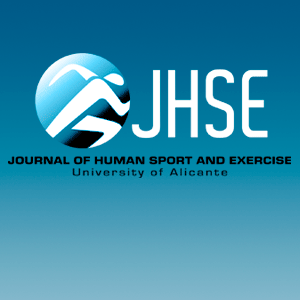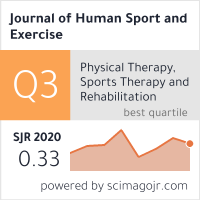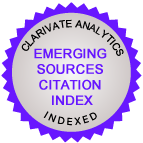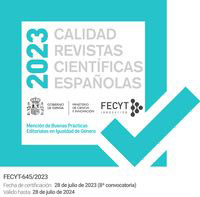Comparison of EEG biofeedback and visual search strategies during e-sports play according to skill level
Keywords:
Visual search strategy, Eye tracking, EEG, e-sports, FPS gamesAbstract
About 83% of the perceptual information humans receive from the outside world comes through the visual domain, making the tracking of visual information important for the superior performance of e-sports players. In addition, it is known that e-sports players’ emotional state during performance affects their results. However, few studies have examined visual search strategies and electroencephalogram (EEG) findings of e-sports players while engaged in e-sports. Therefore, the present study aimed to investigate the characteristics of visual search activity and EEG feedback during first person shooter (FPS) game play, in which the tracking of visual information is important, and to examine the characteristics of different gaming skill levels. Four skilled and five semi-skilled e-sports participants (mean age ± 19.11, SD = 0.99) participated in this study. Gazepoint GP3 (Canada) was used to measure eye movements, and the Sports KANSEI (Littlesoftware Inc., Japan) was used to analyse the emotional state of the participants by using EEG data. The results showed that the skilled e-sports players checked the camera significantly more frequently than the semi-skilled participants. The results of the area of interest (AOI) analysis showed that skilled e-sports players glanced at the friendly team information displayed at the top of the game screen more often than semi-skilled players. Furthermore, it was found that skilled e-sports players had significantly higher average EEG relaxation values during gameplay than semi-skilled players. Thus, the visual search strategy and emotional state while playing e-sports differed according to gaming skill level.
Downloads
References
Bonny, J.W. & Castaneda, L.M. (2017). Number processing ability is connected to longitudinal changes in multiplayer online battle arena skill. Computers in Human Behavior, 66, 377-387. https://doi.org/10.1016/j.chb.2016.10.005
Campbell, M. J., Toth, A. J., Moran, A. P., Kowal, M., & Exton, C. (2018). eSports: a new window on neurocognitive expertise? Progress in Brain Research, 240, 161-174. https://doi.org/10.1016/bs.pbr.2018.09.006
Furukado, R. & Isogai, H. (2020). Differences in Visual Search Strategies Based on Multiple Object Tracking Skill Level of Soccer Athletes. Journal of Japan Society of Sports Industry, 29(2), 91-107. https://doi.org/10.5997/sposun.29.2_91
Hagiwara, G., Akiyama, D. & Takeshita, S. (2019). Examining effectiveness of e-sports activity in Japan. Journal of Human Sport and Exercise, 14(Proc4), S1038-S1045. https://doi.org/10.14198/jhse.2019.14.Proc4.66
Hagiwara, G., Akiyama, D., Furukado, R. & Takeshita, S. (2020). A study on psychological training of eSports using digital games: Focusing on rhythm game. Journal of Human Sport and Exercise, 15(Proc3), S495-S503. https://doi.org/10.14198/jhse.2020.15.Proc3.03
Hagiwara, G., Kawahara, I. & Kihara, S. (2020). An Attempt to Verify the Positive Effects of eSports: Focusing on Concentration and Cognitive Skill. Journal of Japan Society of Sports Industry, 30(3), 239-246. https://doi.org/10.5997/sposun.30.3_239
Hung, J.C., Lin, Z.Q., Huang, C.H. & Lin, K.C. (2019). The Research of Applying Affective Computing Based on Deep Learning for eSports Training. In International Conference on Frontier Computing, LNEE(551), 122-129. https://doi.org/10.1007/978-981-15-3250-4_15
Jordet, G., Bloomfield, J. & Heijmerikx J. (2013). The hidden foundation of field vision in English Premier League (EPL) soccer players. In Proceedings of the MIT sloan sports analytics conference.
Kikumasa, S. & Kokubu, M. (2018). Decision-making and Visual Search Strategy of Baseball Catchers in a Situation of Giving Directions on a Play. Japanese journal of sport psychology, 45(1), 27-41. https://doi.org/10.4146/jjspopsy.2017-1707
Martin-Niedecken, A.L. & Schättin, A. (2020). Let the body'n'brain games begin: Toward innovative training approaches in eSports athletes. Frontiers in psychology, 11, 138. https://doi.org/10.3389/fpsyg.2020.00138
Miyata, A., Fukui, K., Honda, K., Shigeno, H. & Okada, K. (2004). A Proposal of Indexing Conference with Participants' Mental States. IPSJ., 45,11, 2509-2518.
Morrison, S. (2018). List of Varsity Esports Programs Spans North America. Available online at: http://www.espn.com/esports/story/_/id/21152905/college-esports-list-varsity-esports-programs-north-america (accessed September 25, 2020).
Santos, A. F., Alloza, S. & Escribano, F. (2018) Relationship between video game genres and soft skills. Available online at: https://gecon.es/game-genres-and-soft-skills/ (accessed September 25, 2020).
Söderberg, H., Khalid, J., Rayees, M., Dahlman, J., & Falkmer, T. (2014). In video war games, are military personnel's fixation patterns different compared with those of civilians?. The Journal of Defense Modeling and Simulation, 11(4), 329-338. https://doi.org/10.1177/1548512912467867
Sousa, A., Ahmad, S. L., Hassan, T., Yuen, K., Douris, P., Zwibel, H., & DiFrancisco-Donoghue, J. (2020). Physiological and Cognitive Functions Following a Discrete Session of Competitive Esports Gaming. Frontiers in psychology, 11, 1-6. https://doi.org/10.3389/fpsyg.2020.01030
Valladão, S., Andre, T. & Cox, D. (2019). "Heart Rate Response During A Collegiate Esports Tournament. Journal of the American College of Sports Medicine, Suppl.51(5), 29. https://doi.org/10.1249/01.mss.0000560577.32391.44
Published
How to Cite
Issue
Section
License
Copyright (c) 2020 Journal of Human Sport and Exercise

This work is licensed under a Creative Commons Attribution-NonCommercial-NoDerivatives 4.0 International License.
Each author warrants that his or her submission to the Work is original and that he or she has full power to enter into this agreement. Neither this Work nor a similar work has been published elsewhere in any language nor shall be submitted for publication elsewhere while under consideration by JHSE. Each author also accepts that the JHSE will not be held legally responsible for any claims of compensation.
Authors wishing to include figures or text passages that have already been published elsewhere are required to obtain permission from the copyright holder(s) and to include evidence that such permission has been granted when submitting their papers. Any material received without such evidence will be assumed to originate from the authors.
Please include at the end of the acknowledgements a declaration that the experiments comply with the current laws of the country in which they were performed. The editors reserve the right to reject manuscripts that do not comply with the abovementioned requirements. The author(s) will be held responsible for false statements or failure to fulfill the above-mentioned requirements.
This title is licensed under a Creative Commons Attribution-NonCommercial-NoDerivatives 4.0 International license (CC BY-NC-ND 4.0).
You are free to share, copy and redistribute the material in any medium or format. The licensor cannot revoke these freedoms as long as you follow the license terms under the following terms:
Attribution — You must give appropriate credit, provide a link to the license, and indicate if changes were made. You may do so in any reasonable manner, but not in any way that suggests the licensor endorses you or your use.
NonCommercial — You may not use the material for commercial purposes.
NoDerivatives — If you remix, transform, or build upon the material, you may not distribute the modified material.
No additional restrictions — You may not apply legal terms or technological measures that legally restrict others from doing anything the license permits.
Notices:
You do not have to comply with the license for elements of the material in the public domain or where your use is permitted by an applicable exception or limitation.
No warranties are given. The license may not give you all of the permissions necessary for your intended use. For example, other rights such as publicity, privacy, or moral rights may limit how you use the material.
Transfer of Copyright
In consideration of JHSE’s publication of the Work, the authors hereby transfer, assign, and otherwise convey all copyright ownership worldwide, in all languages, and in all forms of media now or hereafter known, including electronic media such as CD-ROM, Internet, and Intranet, to JHSE. If JHSE should decide for any reason not to publish an author’s submission to the Work, JHSE shall give prompt notice of its decision to the corresponding author, this agreement shall terminate, and neither the author nor JHSE shall be under any further liability or obligation.
Each author certifies that he or she has no commercial associations (e.g., consultancies, stock ownership, equity interest, patent/licensing arrangements, etc.) that might pose a conflict of interest in connection with the submitted article, except as disclosed on a separate attachment. All funding sources supporting the Work and all institutional or corporate affiliations of the authors are acknowledged in a footnote in the Work.
Each author certifies that his or her institution has approved the protocol for any investigation involving humans or animals and that all experimentation was conducted in conformity with ethical and humane principles of research.
Competing Interests
Biomedical journals typically require authors and reviewers to declare if they have any competing interests with regard to their research.
JHSE require authors to agree to Copyright Notice as part of the submission process.






